Brian Powell and his team play a key role in maintaining a sustainable environment
Brian Powell and his team play a key role in maintaining a sustainable environment
Brian Powell of Clemson University and his team are working to make sure nuclear waste is safely and securely managed. Their research is focused on spent fuel from nuclear power plants, as well as defense-related waste.
Photo: Brian Powell, Fjeld Professor in Nuclear Environmental Engineering and Science, works in a lab with students.
Brian Powell of Clemson University and his team are working to make sure nuclear waste is safely and securely managed. Their research is focused on spent fuel from nuclear power plants, as well as defense-related waste.
Photo: Brian Powell, Fjeld Professor in Nuclear Environmental Engineering and Science, works in a lab with students.
It’s a crucial issue in South Carolina and nationwide because nuclear energy is a major source of power. Also, millions of gallons of defense-related nuclear waste are awaiting treatment and disposal at U.S. Department of Energy facilities across the country.
It’s a crucial issue in South Carolina and nationwide because nuclear energy is a major source of power. Also, millions of gallons of defense-related nuclear waste are awaiting treatment and disposal at U.S. Department of Energy facilities across the country.
19.7% of U.S. electricity generation comes from nuclear generation. Source: U.S. Energy Information Administration

19.7% of U.S. electricity generation comes from nuclear generation. Source: U.S. Energy Information Administration
South Carolina’s four nuclear power plants supplied more than half its energy as recently as 2020. Source: U.S. Energy Information Administration
South Carolina’s four nuclear power plants supplied more than half its energy as recently as 2020. Source: U.S. Energy Information Administration

The U.S. Department of Energy’s Office of Environmental Management manages a large amount of legacy wastes from nuclear weapons production. Its budget request was nearly $7.6 billion for fiscal year 2022 alone. Source: Energy.gov
The U.S. Department of Energy’s Office of Environmental Management manages a large amount of legacy wastes from nuclear weapons production. Its budget request was nearly $7.6 billion for fiscal year 2022 alone. Source: Energy.gov

Some of the Powell team’s most recent published work has focused on nuclear-power plant waste, particularly neptunium. Power plant operators store spent nuclear fuel in pools and dry casks, but those locations are not intended as permanent homes. Rather, radioactive waste will need to be stored underground in geologically stable sites for hundreds of thousands of years. To ensure environmental safety, it is important to understand how waste transforms chemically– and that’s why the Powell team’s work is so important. Source: U.S. Department of Energy Office of Science
Some of the Powell team’s most recent published work has focused on nuclear-power plant waste, particularly neptunium. Power plant operators store spent nuclear fuel in pools and dry casks, but those locations are not intended as permanent homes. Rather, radioactive waste will need to be stored underground in geologically stable sites for hundreds of thousands of years. To ensure environmental safety, it is important to understand how waste transforms chemically– and that’s why the Powell team’s work is so important. Source: U.S. Department of Energy Office of Science
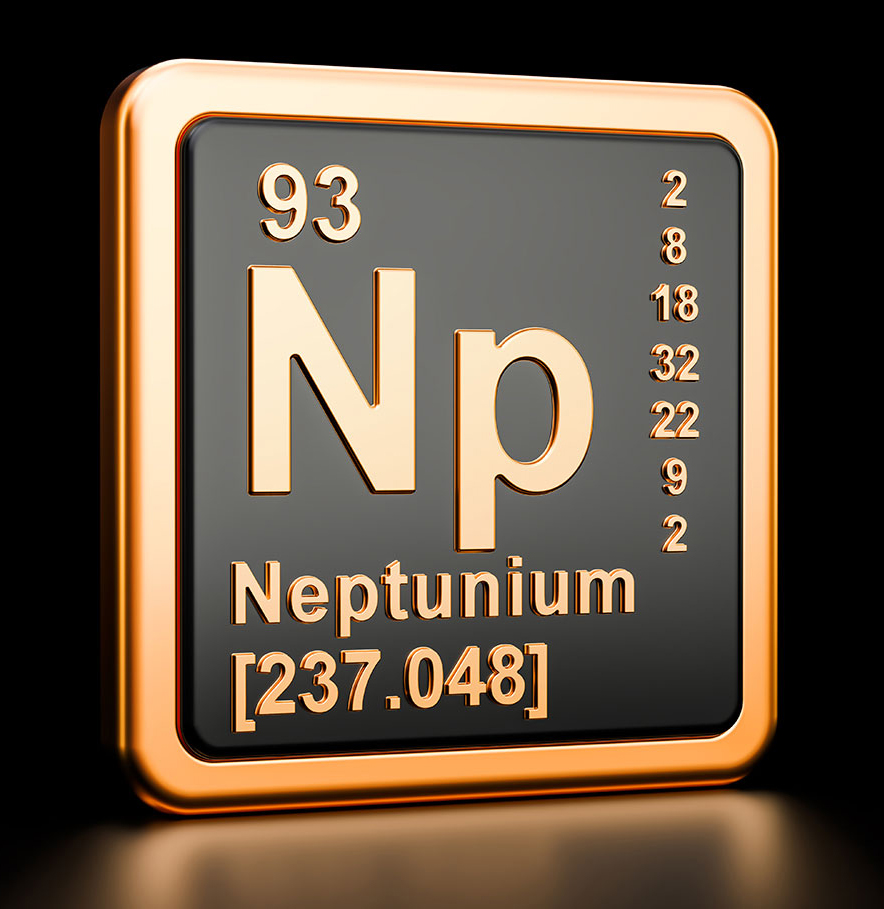
To understand where neptunium comes from, you have to start with uranium. The heavy metal splits in a nuclear reactor to generate heat, which produces steam to spin a generator, creating electricity. But not all the uranium splits. Instead, some of it gets heavier and becomes neptunium or plutonium. Both are particularly toxic, making safe disposal absolutely critical.
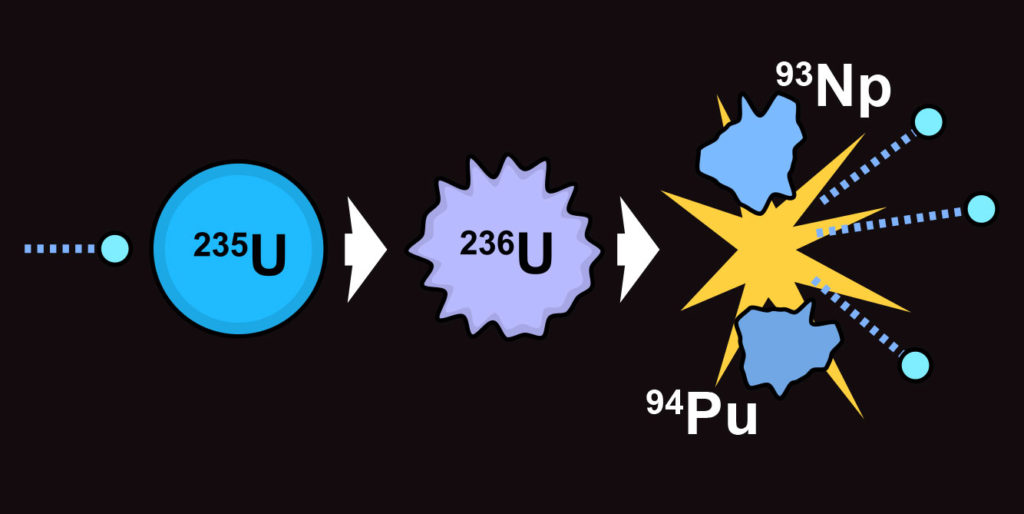
To understand where neptunium comes from, you have to start with uranium. The heavy metal splits in a nuclear reactor to generate heat, which produces steam to spin a generator, creating electricity. But not all the uranium splits. Instead, some of it gets heavier and becomes neptunium or plutonium. Both are particularly toxic, making safe disposal absolutely critical.
Fortunately, the toxic elements can be turned into neptunium oxide or plutonium oxide, which makes them more stable for long-term storage or disposal. Both remain solid and not easily dissolved by water as long as they stay in oxide form.
*Not actual photo. Interpretive illustration.
Fortunately, the toxic elements can be turned into neptunium oxide or plutonium oxide, which makes them more stable for long-term storage or disposal. Both remain solid and not easily dissolved by water as long as they stay in oxide form.
*Not actual photo. Interpretive illustration.
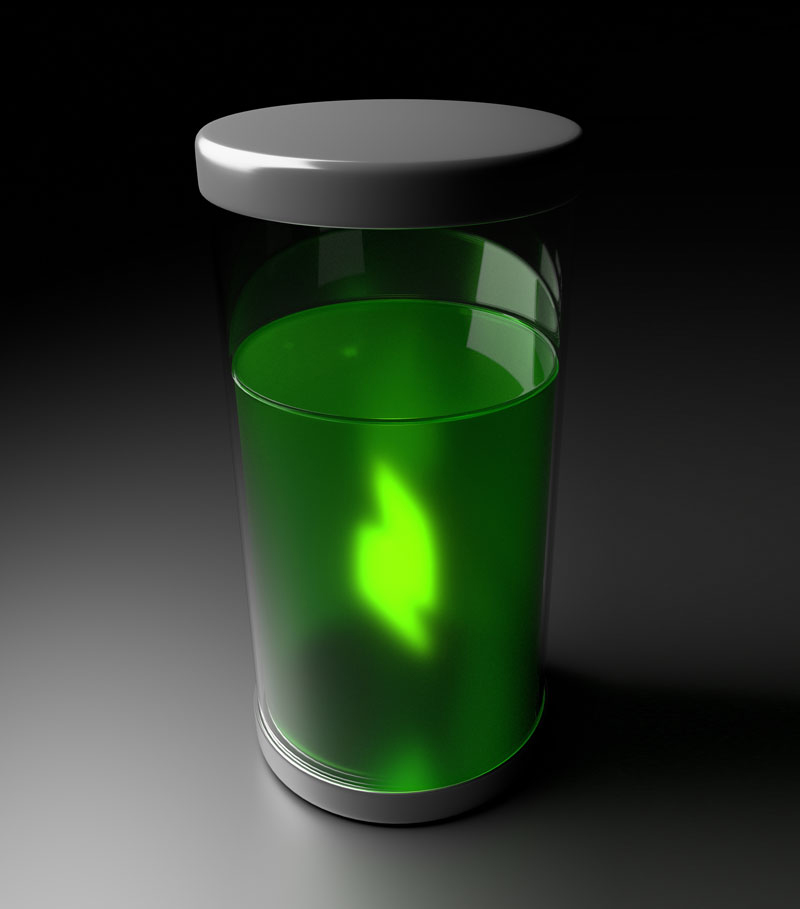
However, previous research has shown that neptunium under common environmental conditions can undergo a chemical reaction that makes it more easily dissolved. If the waste is buried and hit by rainwater that trickles through the soil, it could become mobile, raising the risk it could escape the storage site and pollute the environment.
However, previous research has shown that neptunium under common environmental conditions can undergo a chemical reaction that makes it more easily dissolved. If the waste is buried and hit by rainwater that trickles through the soil, it could become mobile, raising the risk it could escape the storage site and pollute the environment.
One of Powell’s former Ph.D. students, Kathryn Peruski, focused her dissertation on what to do about neptunium. She co-authored two papers, both published in the journal Environmental Science: Nano and featured on the U.S. Department of Energy Office of Science website.
One of Powell’s former Ph.D. students, Kathryn Peruski, focused her dissertation on what to do about neptunium. She co-authored two papers, both published in the journal Environmental Science: Nano and featured on the U.S. Department of Energy Office of Science website.
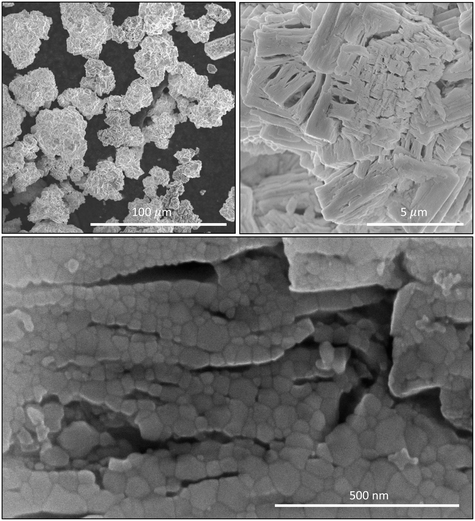
While the neptunium appears solid to the human eye, a closer look through an electron microscope reveals that it is made of billions of particles, or grains (top left image). Peruski found that the chemistry that causes neptunium to dissolve happens where the grains meet. Those areas are called grain boundaries (bottom image). Peruski also discovered it is possible for a single particle to break off, which raises the risk it could move through the soil with the rainwater and escape the storage site.

While the neptunium appears solid to the human eye, a closer look through an electron microscope reveals that it is made of billions of particles, or grains (top left image). Peruski found that the chemistry that causes neptunium to dissolve happens where the grains meet. Those areas are called grain boundaries (bottom image). Peruski also discovered it is possible for a single particle to break off, which raises the risk it could move through the soil with the rainwater and escape the storage site.
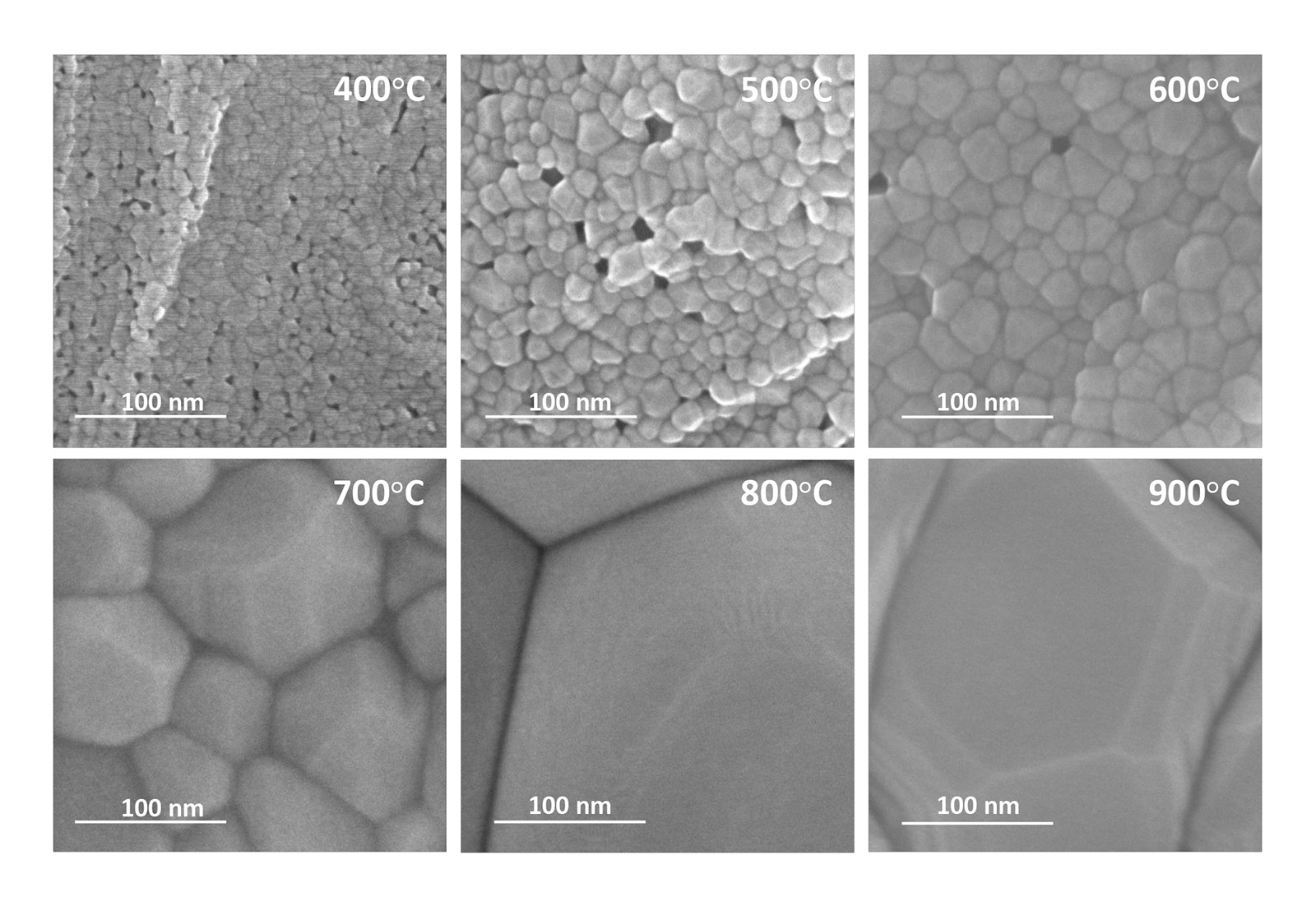
The good news is that Peruski also found a potential solution. To make neptunium oxide, neptunium is combined with chemicals and heated in a furnace. Peruski found that when the neptunium mixture was heated at 900 degrees centigrade, the grains came out 500 times larger than when it was heated at 400 degrees centigrade. Larger grains resulted in fewer boundaries and therefore a more stable material.
That means it could be possible to bury more neptunium oxide in the same site if the material is formed with high heat.

The good news is that Peruski also found a potential solution. To make neptunium oxide, neptunium is combined with chemicals and heated in a furnace. Peruski found that when the neptunium mixture was heated at 900 degrees centigrade, the grains came out 500 times larger than when it was heated at 400 degrees centigrade. Larger grains resulted in fewer boundaries and therefore a more stable material.
That means it could be possible to bury more neptunium oxide in the same site if the material is formed with high heat.
Peruski received her Ph.D. in environmental engineering and Earth sciences from Clemson thanks in large part to her research on neptunium. She defended her dissertation in March 2020 and took a position the following month as postdoctoral research associate in radiochemistry at Oak Ridge National Laboratory. She has since accepted a full-time position as an R&D associate in radiochemistry.
Peruski received her Ph.D. in environmental engineering and Earth sciences from Clemson thanks in large part to her research on neptunium. She defended her dissertation in March 2020 and took a position the following month as postdoctoral research associate in radiochemistry at Oak Ridge National Laboratory. She has since accepted a full-time position as an R&D associate in radiochemistry.
The research was one of many projects enabled by the U.S. Department of Energy’s Experimental Program to Stimulate Competitive Research. The program, also called by the acronym EPSCoR, provided $5.25 million in 2014 and another $2 million in 2018 to the Center for Nuclear Environmental Engineering and Science and Radioactive Waste Management with Powell as the primary investigator.
Here’s more about what the program accomplished:
- It brought together a versatile team of researchers from Clemson University, the University of South Carolina and South Carolina State University.
- 18 master’s students and 11 Ph.D. students have graduated as a result of the work they have done thus far on the project.
- The team’s members have published 48 articles related to their research.
- Researchers on the project pioneered new ways of using technology developed for medical-imaging to study the movement of radionuclides through soil.
The research was one of many projects enabled by the U.S. Department of Energy’s Experimental Program to Stimulate Competitive Research. The program, also called by the acronym EPSCoR, provided $5.25 million in 2014 and another $2 million in 2018 to the Center for Nuclear Environmental Engineering and Science and Radioactive Waste Management with Powell as the primary investigator.
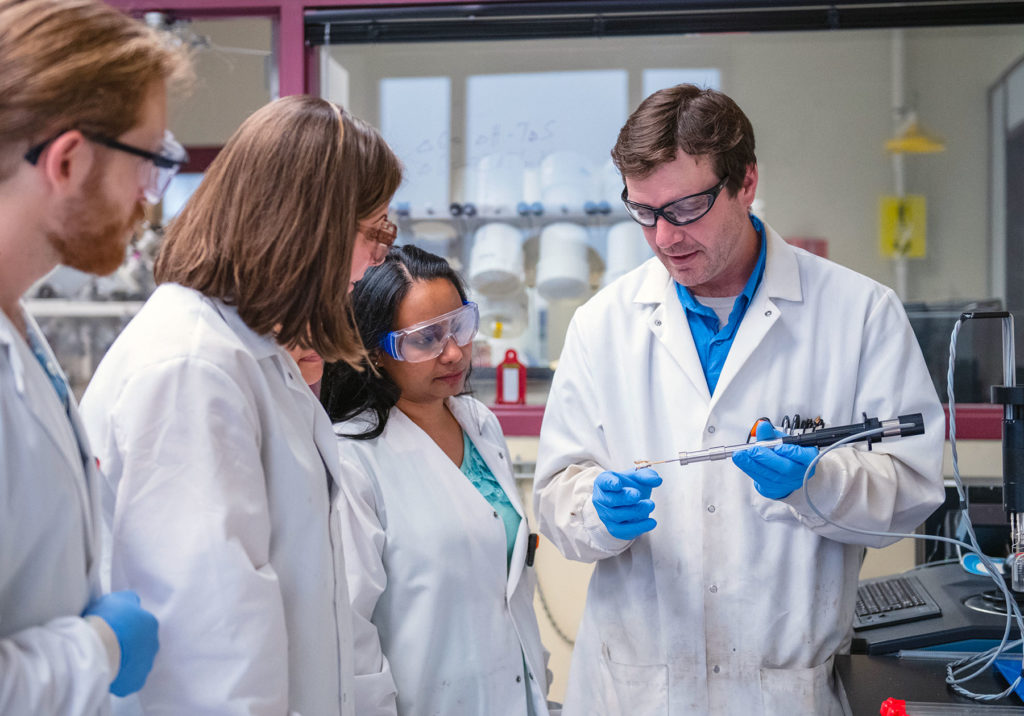
Here’s more about what the program accomplished:
- It brought together a versatile team of researchers from Clemson University, the University of South Carolina and South Carolina State University.
- 18 master’s students and 11 Ph.D. students have graduated as a result of the work they have done thus far on the project.
- The team’s members have published 48 articles related to their research.
- Researchers on the project pioneered new ways of using technology developed for medical-imaging to study the movement of radionuclides through soil.
To read more about Peruski’s research, check out the papers she co-authored.
- “Grain boundary facilitated dissolution of nanocrystalline NpO₂ (s) from legacy waste processing.” Co-authors are Peruski, Kelliann C. Koehler and Powell. READ PAPER
- “Effect of calcination temperature on neptunium dioxide microstructure and dissolution.” Co-authors are Peruski and Koehler. READ PAPER
To read more about Peruski’s research, check out the papers she co-authored.
- “Grain boundary facilitated dissolution of nanocrystalline NpO₂ (s) from legacy waste processing.” Co-authors are Peruski, Kelliann C. Koehler and Powell. READ PAPER
- “Effect of calcination temperature on neptunium dioxide microstructure and dissolution.” Co-authors are Peruski and Koehler. READ PAPER